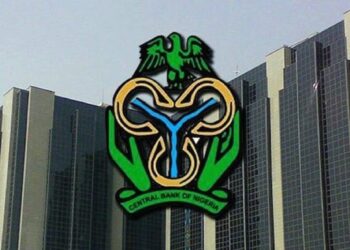In a move, that has ignited both curiosity and skepticism, the National Bureau of Statistics (NBS) of Nigeria recently launched its revamped Nigeria Labour Force Survey (NLFS) for the fourth quarter of 2022 and the first quarter of 2023. While the NBS, in collaboration with the World Bank and the International Labour Organisation (ILO), lauds the new survey as a groundbreaking revelation into the dynamics of the Nigerian workforce, an unexpected voice has emerged, questioning the authenticity of the reported figures.
According to Prince Adeyemi Adeniran, the Statistician-General of the Federation and Chief Executive Officer of the NBS, the survey was conducted with the adoption of the 19th International Conference of Labour Statisticians (ICLS) resolution, aligning Nigeria’s methodology with international best practices.
A Shift in Measurement and Understanding
Under the new methodology, employed persons are defined as those who have worked for at least one hour in the last 7 days for pay or profit, while underemployed individuals are those working less than 40 hours per week but willing and available for more work. Unemployed persons are those who are not engaged in employment but are actively searching and available for work. This refined categorization aims to present a clearer picture of the diverse labor landscape.
A Mixed Bag of Numbers
The report has certainly raised eyebrows with its revelations. According to the report, around 73.6% of working-age Nigerians were employed in Q4 2022, rising to 76.7% in Q1 2023, indicating substantial engagement in some form of employment. The reported unemployment rate also experienced a downward trend, marking 5.3% in Q4 2022 and 4.1% in Q1 2023.
The presented figures have ignited a comparison with other developing nations where similar low-productivity, short-duration jobs are often considered essential to make ends meet. This phenomenon isn’t unique to Nigeria; in economies grappling with limited social protection systems, even marginal work takes on an increased significance. As such, the downward shift in unemployment rates, while seemingly remarkable, raises concerns about whether the figures genuinely reflect a thriving labor market or if they are emblematic of a population scraping by on sporadic work engagements.
Analysts Weigh In: The Unemployment Paradox
Leading economists and labor market experts have now stepped into the fray, offering diverse interpretations of the reported figures. Mr. Stephen Akudike, an economic analyst at a prominent research institution, expresses his view, stating, “While the data suggests a positive trajectory, we must remember unemployment is not a determinant of poverty, in Nigeria most employed people are still poor. Low-hours, informal jobs may mitigate headline unemployment figures but don’t necessarily translate to financial stability or decrease in economic hardship.”
On the other hand, Professor Kwame Osei, an authority on labor economics, takes a cautiously optimistic stance: “Nigeria’s labor market is undeniably diverse, encompassing a range of employment forms. The numbers might not be entirely misleading; they might instead reflect the reality of a nation where traditional full-time jobs coexist with myriad informal arrangements.”
Prof. Nteun Etim, the CEO of Spot research Hub, commented that; “ The figures are manipulated by the government, most of the youth are jobless and the economy is suffering because of it. The unemployment rate is more than double figures” he concluded
Dissenting Angel Casts Doubt
However, amidst the accolades and praise, a dissenting voice has emerged. An anonymous source within the statistical community, dubbed “The Doubting Angel,” questions whether these figures truly represent the on-ground reality of Nigeria’s labor market. The angel raises concerns about the abrupt reduction in the unemployment rate and the marked decrease in underemployment, both of which seem incongruent with the economic challenges that the country has been facing.
Navigating the Controversy
As the discourse on the authenticity of the NLFS report unfolds, stakeholders are urged to critically assess the new methodology and its implications. While the NBS asserts that the refined definitions provide a more accurate representation of the labor landscape, experts remain divided on whether the reported figures align with the current economic conditions.
An Ongoing Debate
As the nation grapples with this unexpected controversy, the NLFS remains a focal point of discussion among policymakers, economists, and the general public. The angelic debate raises important questions about the intricacies of labor measurement and the nuances of employment dynamics. While the NBS has presented its case, the jury of public opinion remains out, waiting for further analyses to unravel the truth behind the numbers.











